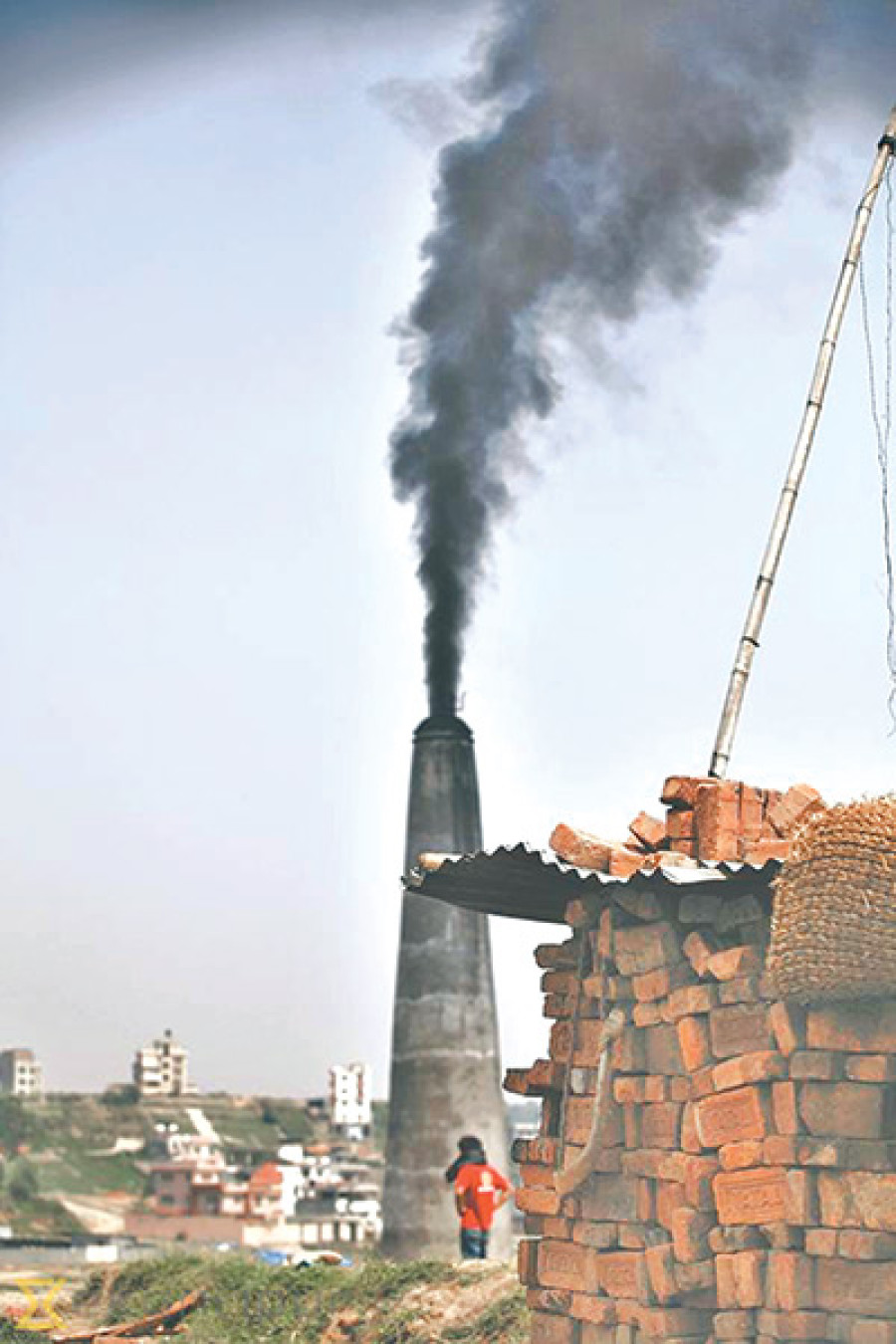National
Government issues new standards for brick kilns
The government has introduced new standards on Chimney Height and Emission for the Brick Kiln Industries in a bid to limit air pollutants emitted by brick factories.
The government has introduced new standards on Chimney Height and Emission for the Brick Kiln Industries in a bid to limit air pollutants emitted by brick factories.
The new standards, upgraded from the previous one endorsed in 2008, have set emission standards and chimney height for seven types of kilns.
Emissions from brick kilns along with vehicles are said to be major contributors to air pollution in the country, which was recently ranked among the worst in the world by a study.
The latest standards, promulgated by the Ministry of Population and Environment (MoPE), have fixed the maximum amount of Suspended Particulate Matter (SPM).
According to the new standards, the maximum SPM coming from Bull’s Trench Kilns/Forced Draught with the fixed chimney has been fixed at 350 milligrams per cubic metre (mg/Nm3) while the minimum stack height from the ground has been retained at 17 metres.
For Bull’s Trench Kiln/Natural Draught with fixed chimney, the maximum SPM has been set at 500 mg/Nm3 and stack height at existing 30 metres.
Earlier, the SPM levels for these two brick kilns were set at 600 mg/Nm3 and 700 mg/Nm3 respectively.
Because of excessive emission of smoke due to incomplete burning of coal, the Bull’s Trench Kiln technology are seen as highly pollution technology, which dates back to the 19th century.
For both Forced and Natural Draught types of Hoffman Kilns, the SPM has been fixed at 350 mg/Nm3 and 500 mg/Nm3 respectively. Stack for these kilns will also remain 17 and 30 metres. Hoffman kilns were not included in the previous standards for the country’s brick industry.
Likewise, SPM level for Vertical Shaft Brick Kiln (VSBK) and Hybrid Hoffman Kiln (HHK) has been set at 250 mg/Nm3 and 200 mg/Nm3 respectively. Tunnel Kilns’ SPM has been fixed at 100 mg/Nm3 and its stack height at 10 metres.
The VSBK, HHK and Tunnel kilns are new technologies in brick production and are cleaner than Bull’s Trench Kiln technology as they consume less energy and emit less pollutants.
Brick factories have been long blamed for air pollution in the country, especially in the Kathmandu Valley, where 110 brick plants are in operation. Of the total brick factories in the Valley, 97 percent (107) are run under the highly polluting Bull’s Trench Kiln technology, according to last year’s study of the Department of Environment (DoE).
The Valley’s brick factories consume average 56,100 tonnes of coals per year and 330 tonnes of other local fuels every year, according to the DoE study.
Massive coal consumption by brick factories has led to high emissions of carbon dioxide, sulphur dioxide, nitrogen oxide and carbon monoxide into the air, which are harmful to public health.
DoE Director General Durga Prasad Dawadi said the contribution of new standards to limiting air pollution in the Valley will be negligible.
“We can not portray brick factories as the sole polluter of the Kathmandu Valley. We have to control emissions from vehicles and dust coming from roads as they are the major agents for air pollution here,” said Dawadi, adding these new standards for the brick industry will not help lower pollution.
According to him, most of the brick factories in the Valley are already following the standards.
“Even with the compliance of these standards, Kathmandu Valley continues to be polluted. Only if we manage to shut down all brick factories we will have some improvement in our air quality,” he said.
The DoE study, conducted among 30 brick factories in 2017, had shown that SPM
concentrations were below than the then standards, but not the newly endorsed one. The study had also found that not a single factory had installed pollution control devices.
Dawadi has stressed the need for much stricter standards to significantly
control emission from the brick factories inside the Valley.
He said that proposed standards on part with international practice was rejected by the ministry in the past, citing it was “too severe”.




 7.12°C Kathmandu
7.12°C Kathmandu












%20(1).jpg&w=300&height=200)

